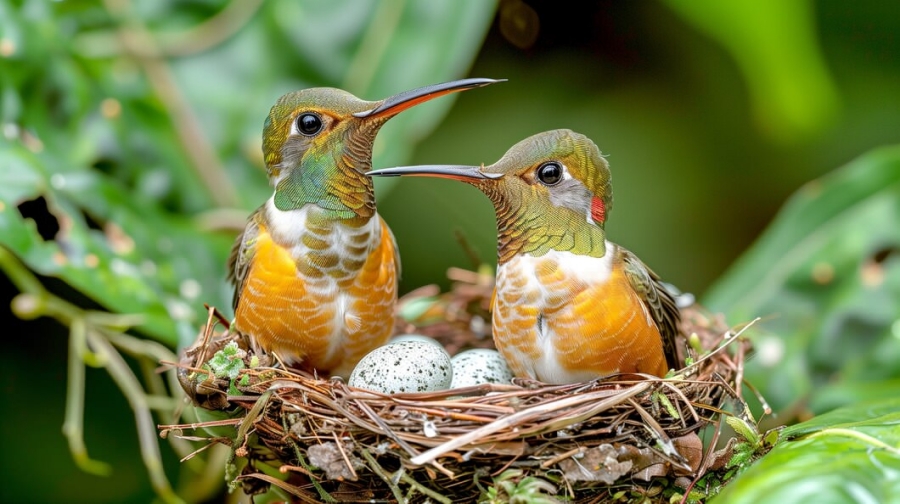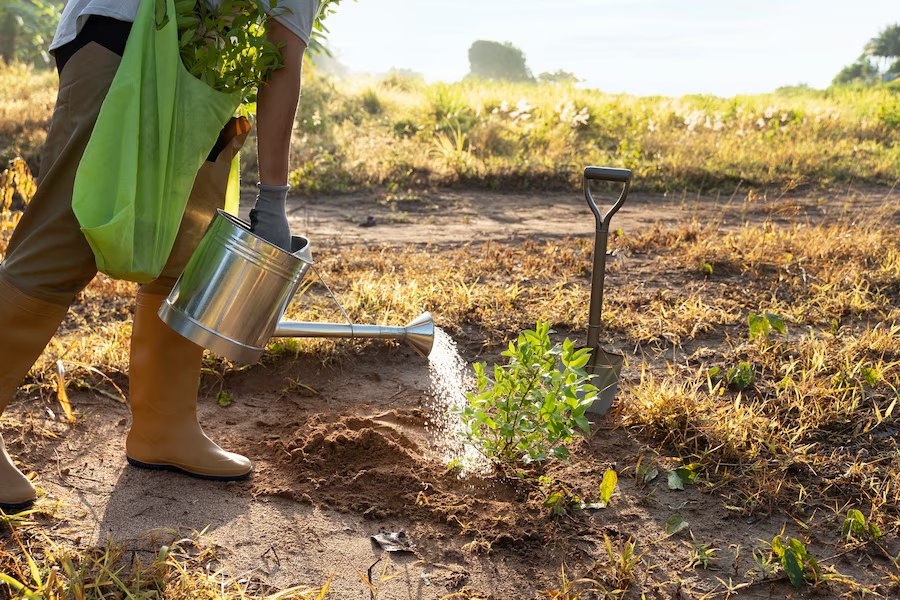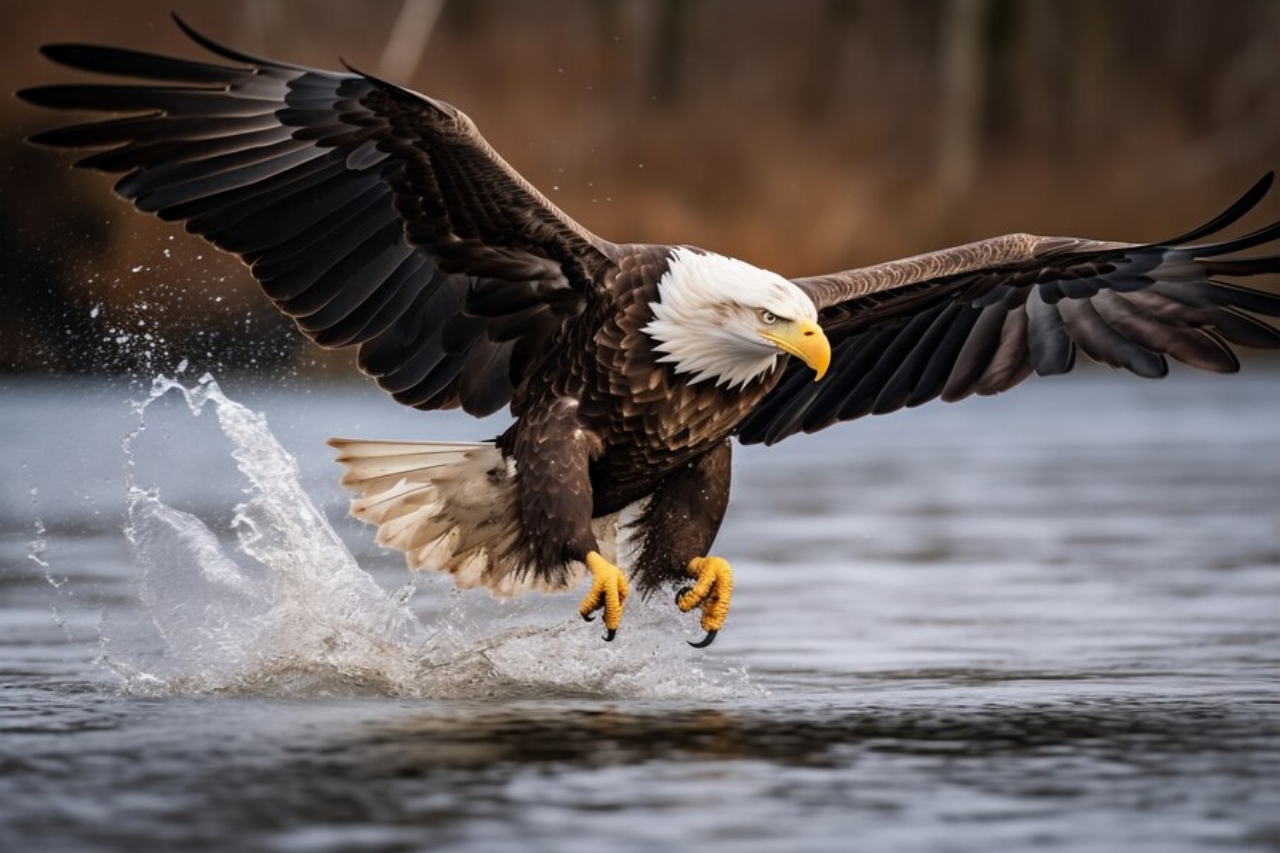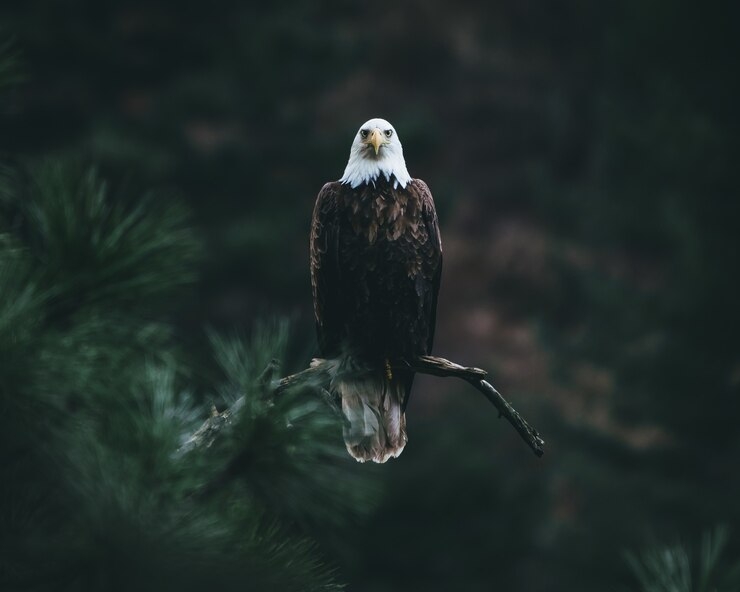Birdwatching is a fascinating hobby that allows us to connect with nature in a unique and meaningful way. Among the myriad of bird species around the world, Hancock birds stand out for their mysterious and captivating nature.
These birds, native to diverse habitats, exhibit intriguing behaviors and characteristics that make them a subject of interest for ornithologists and bird enthusiasts alike. This article delves into the enigmatic world of Hancock birds, exploring their habitats, behaviors, and the conservation efforts in place to protect them.
The Habitat of Hancock Birds
Hancock birds inhabit a wide range of environments, from dense forests to open wetlands. Each species has adapted to its specific habitat, developing unique survival strategies. For instance, some these birds are known to thrive in tropical rainforests, where the dense canopy provides ample food and shelter.
Others are found in arid regions, demonstrating incredible resilience and adaptability to harsh conditions. Understanding the habitats of Hancock birds is crucial for their conservation, as it helps identify the critical areas that need protection.
Tropical Rainforests
In tropical rainforests, Hancock birds benefit from the abundance of fruits, insects, and other food sources. The dense vegetation provides numerous nesting sites and protection from predators.
These forests also offer a stable climate, which is essential for the breeding success of many Hancock bird species. However, deforestation poses a significant threat to these habitats, making conservation efforts in these regions particularly vital.
Wetlands and Marshes
Wetlands and marshes are another key habitat for Hancock birds. These areas provide rich feeding grounds, particularly for species that feed on aquatic insects, fish, and amphibians.
Wetlands also serve as crucial stopover points for migratory Hancock birds, offering rest and nourishment during long journeys. The degradation of wetland habitats due to pollution and land reclamation has had a profound impact on these bird populations, highlighting the need for wetland conservation initiatives.
Arid and Semi-Arid Regions
In arid and semi-arid regions, Hancock birds have adapted to survive with limited water and extreme temperatures. These birds often exhibit behaviors such as seeking shade during the hottest parts of the day and foraging for food during cooler periods.
Their ability to find and utilize scarce water sources is remarkable. Protecting these habitats from overgrazing and desertification is critical to ensuring the survival of Hancock birds in these challenging environments.
Unique Behaviors and Adaptations
One of the most intriguing aspects of Hancock birds is their diverse range of behaviors and adaptations. These birds have evolved over millennia to survive in their respective environments, leading to a fascinating array of traits.
For example, some Hancock birds are known for their exceptional mimicry skills, imitating the sounds of other birds and even human-made noises. This ability not only helps them avoid predators but also aids in attracting mates. Additionally, certain species have developed specialized feeding techniques, such as probing the bark of trees for insects or fishing in shallow waters.
Mimicry and Vocalization of Hancock Birds
Mimicry and vocalization are among the most captivating behaviors observed in Hancock birds. Species like the lyrebird and mockingbird are renowned for their ability to replicate a wide range of sounds, from other bird calls to mechanical noises.
This skill serves multiple purposes, including deterring predators, attracting mates, and establishing territory. The complexity and accuracy of these vocalizations continue to fascinate researchers, who study the neurological and environmental factors that contribute to this remarkable ability.
Foraging Techniques
The foraging techniques of Hancock birds are as varied as their habitats. Some species have evolved to extract insects from tree bark using specialized beaks, while others are adept at catching fish with swift dives into the water.
Ground-feeding Hancock birds may employ scratching and pecking behaviors to uncover insects and seeds. Understanding these foraging strategies provides insight into the ecological roles of Hancock birds and their adaptations to different environments.

Nesting and Breeding of Hancock Birds
Nesting and breeding behaviors among Hancock birds are equally diverse and fascinating. Many species build elaborate nests, ranging from simple ground scrapes to intricate woven structures.
These nests serve not only as safe havens for eggs and chicks but also as displays of the builder’s fitness and skill. Courtship rituals often involve complex displays, vocalizations, and even gift-giving, showcasing the diversity of reproductive strategies in the Hancock bird family.
The Mating Rituals of Hancock Birds
Mating rituals among Hancock birds are a spectacle of nature, often involving elaborate displays and calls. These rituals are not only a means of attracting a mate but also play a role in establishing territory and social hierarchy.
For instance, some male Hancock birds perform intricate dances, showcasing their vibrant plumage and agility. Others may build elaborate nests or offer food gifts to potential mates. These behaviors are not just for show; they are critical for the survival and reproduction of the species, ensuring that the strongest and most adaptable individuals pass on their genes.
Courtship Displays
Courtship displays among Hancock birds can be incredibly elaborate and varied. In species like the bird of paradise, males perform intricate dances, displaying their brightly colored feathers in a dramatic fashion.
These displays often take place in specific areas known as lekking grounds, where multiple males gather to compete for the attention of females. The success of these displays depends on the male’s ability to impress potential mates with his physical attributes and performance.
Nest Building and Gift Giving
In some Hancock bird species, males demonstrate their suitability as mates by building elaborate nests or offering food gifts. The quality and complexity of the nest can be a critical factor in a female’s choice of mate.
For example, male bowerbirds construct intricate structures decorated with colorful objects to attract females. Similarly, males of some species bring food to females as a sign of their ability to provide. These behaviors not only enhance mating success but also contribute to the survival of offspring by ensuring that the female partners with a capable mate.
The Role of Hancock Birds in Ecosystems
Hancock birds play a vital role in maintaining the balance of their ecosystems. As both predators and prey, they are integral to the food web, helping to control insect populations and providing sustenance for larger animals.
Additionally, many Hancock birds are pollinators, aiding in the reproduction of various plant species. Their droppings also contribute to soil fertility, promoting healthy plant growth. By understanding the ecological importance of Hancock birds, we can better appreciate the need for their conservation and the preservation of their habitats.
Predation and Pest Control
As predators, Hancock birds help control populations of insects and small animals, contributing to the overall health of their ecosystems. By preying on insects, they help reduce the number of agricultural pests, providing a natural form of pest control.
This role is particularly important in ecosystems where insect outbreaks can cause significant damage to plant life. The presence of Hancock birds can thus contribute to the stability and productivity of these environments.
Role of Hancock Birds in Pollination and Seed Dispersal
Many Hancock birds are also pollinators, playing a crucial role in the reproduction of flowering plants. By transferring pollen from one flower to another, they facilitate the production of fruits and seeds, supporting plant diversity and abundance.
Additionally, some Hancock birds aid in seed dispersal by consuming fruits and excreting the seeds in different locations. This process helps maintain plant populations and promotes forest regeneration, contributing to the health and resilience of ecosystems.
Nutrient Cycling of Hancock Birds
Hancock birds contribute to nutrient cycling within their habitats through their droppings, which enrich the soil with essential nutrients. This process supports plant growth and enhances soil fertility, promoting a healthy and productive ecosystem. The nutrient-rich droppings of Hancock birds are particularly important in nutrient-poor environments, where they can significantly enhance soil quality and support a diverse range of plant species.
Conservation Efforts and Challenges
The conservation of Hancock birds faces several challenges, including habitat loss, climate change, and human activities. Deforestation, pollution, and urbanization have significantly impacted their natural habitats, leading to a decline in population numbers.
Conservation organizations are working tirelessly to protect these birds, implementing measures such as habitat restoration, legal protection, and community education. Efforts are also being made to mitigate the effects of climate change, which poses a long-term threat to the survival of many Hancock bird species.
Habitat Restoration of Hancock Birds
Habitat restoration is a critical component of conservation efforts for Hancock birds. This involves reforestation, wetland restoration, and the creation of protected areas to ensure that these birds have safe and suitable habitats.
Successful habitat restoration projects have led to the recovery of bird populations by providing them with the necessary resources for survival and reproduction. Collaboration between governments, conservation organizations, and local communities is essential for the success of these initiatives.
Legal Protection and Regulations
Legal protection and regulations play a crucial role in the conservation of Hancock birds. This includes the enforcement of laws that prohibit hunting, poaching, and the destruction of habitats.
Additionally, international agreements and treaties aim to protect migratory bird species and their habitats across borders. Advocacy and policy work by conservation organizations help ensure that these laws are implemented and enforced, providing a legal framework for the protection of Hancock birds.
Community Education and Involvement
Community education and involvement are vital for the success of conservation efforts. By raising awareness about the importance of Hancock birds and their habitats, conservation organizations can foster a sense of stewardship and responsibility among local communities.
Educational programs, workshops, and citizen science initiatives encourage community members to participate in conservation activities, such as habitat restoration and monitoring bird populations. Engaging local communities in conservation efforts helps build support for long-term sustainability and the protection of natural resources.
Success Stories in Hancock Bird Conservation
Despite the challenges, there have been notable successes in the conservation of Hancock birds. Several species that were once on the brink of extinction have made remarkable recoveries thanks to dedicated conservation efforts.
For instance, reforestation projects have restored critical habitats, allowing populations to rebound. Captive breeding programs have also played a crucial role, in reintroducing birds into the wild and boosting genetic diversity. These success stories highlight the importance of continued conservation efforts and the positive impact they can have on preserving biodiversity.

Reforestation and Habitat Restoration
Reforestation and habitat restoration projects have been instrumental in the recovery of Hancock bird populations. By planting native trees and restoring degraded habitats, these projects provide essential resources for birds, such as food, shelter, and nesting sites.
Successful examples include the restoration of tropical rainforests and wetland areas, where bird populations have shown significant increases as their habitats have recovered. These projects demonstrate the positive impact of habitat restoration on biodiversity and ecosystem health.
Captive Breeding and Reintroduction
Captive breeding and reintroduction programs have also played a crucial role in Hancock bird conservation. Conservationists can boost population numbers and increase genetic diversity by breeding birds in captivity and releasing them into the wild.
These programs are particularly important for critically endangered species, where every individual is vital for the survival of the population. Success stories, such as the reintroduction of the California condor and the Mauritius kestrel, highlight the potential of captive breeding programs to prevent extinction and restore bird populations.
How Can You Help Protect Hancock Birds?
Protecting Hancock birds is not just the responsibility of conservation organizations; individuals can also make a significant difference. Simple actions such as supporting eco-friendly products, reducing waste, and participating in local conservation projects can have a positive impact.
Birdwatchers can contribute valuable data through citizen science programs, helping researchers track bird populations and identify trends. By raising awareness and advocating for the protection of natural habitats, everyone can play a part in ensuring the survival of these mysterious and captivating birds.
Supporting Eco-Friendly Products
Supporting eco-friendly products and sustainable practices can help reduce the impact of human activities on Hancock bird habitats. By choosing products that are produced sustainably and reducing waste, individuals can contribute to the conservation of natural resources.
This includes supporting companies that prioritize environmental responsibility and avoiding products that contribute to deforestation and habitat destruction.
Participating in Conservation Projects
Participating in local conservation projects is a hands-on way to support Hancock bird conservation. This can include activities such as tree planting, habitat restoration, and wildlife monitoring.
Volunteering with conservation organizations and participating in citizen science programs allows individuals to contribute directly to conservation efforts and gain a deeper understanding of the importance of protecting biodiversity.
Raising Awareness and Advocacy
Raising awareness about the importance of Hancock birds and their conservation is essential for building support for conservation initiatives. This can involve educating others about the ecological roles of these birds, the threats they face, and the actions that can be taken to protect them. Education Portals can Play a significant role in educating them. Advocacy efforts, such as supporting conservation policies and initiatives, can also help ensure that governments and organizations prioritize the protection of Hancock birds and their habitats.
The Future of Hancock Birds
The future of Hancock birds depends on our ability to address the challenges they face and implement effective conservation strategies. Continued research is essential for understanding their behaviors, ecological roles, and the threats they encounter.
Collaboration between governments, conservation organizations, and local communities is crucial for developing and implementing sustainable solutions. By fostering a sense of stewardship and appreciation for nature, we can create a future where Hancock birds thrive and continue to enchant future generations.
Research and Monitoring
Ongoing research and monitoring are critical for understanding the status of Hancock bird populations and the effectiveness of conservation efforts. This includes studying their behaviors, migration patterns, and ecological roles, as well as identifying and addressing threats. By collecting and analyzing data, researchers can develop targeted conservation strategies and track progress over time.
Sustainable Solutions for Hancock Birds
Developing and implementing sustainable solutions is essential for the long-term conservation of Hancock birds. This involves balancing human needs with environmental protection, such as promoting sustainable agriculture, reducing carbon emissions, and protecting natural habitats. Collaborative efforts between governments, conservation organizations, and local communities are necessary to ensure that conservation strategies are effective and sustainable.
Conclusion
Hancock birds, with their mysterious nature and captivating behaviors, remind us of the incredible diversity of life on our planet. Their survival is intricately linked to the health of our ecosystems and the actions we take to protect them.
By exploring their habitats, understanding their roles, and supporting conservation efforts, we can ensure that these remarkable birds continue to inspire wonder and awe. The journey to protect Hancock birds is a collective effort, and each step we take brings us closer to preserving the natural beauty of our world for future generations.


